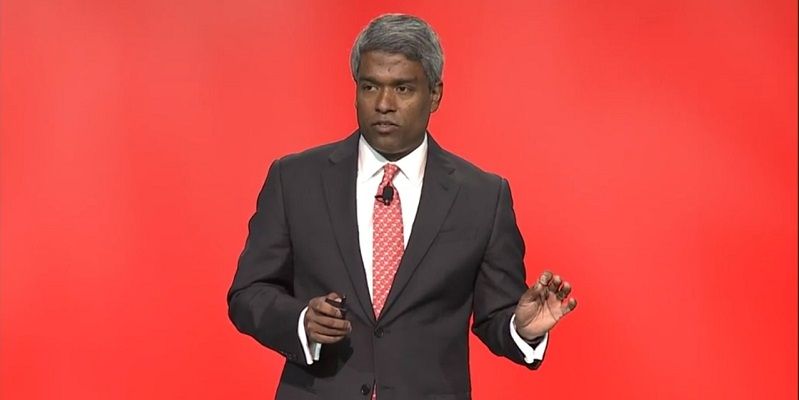The dream pitch an investor would like to see
Remember, when you are doing your first pitch to an investor, it is like your first date — you want to make a good impression in order to get a second date. Yes, you’re nervous. But you also have to take some risks to share your story and to create some intrigue about your relationship (invest-ability) potential.
When you are pitching an investor for the first time, you want to tell your story about why they should invest in your business instead of the 10’s or 100’s of other entrepreneurs who are pitching them to invest. You are primarily selling yourself (and your team) and creating confidence on how you are going to be able to realize the potential of your business to scale, make great profits and provide liquidity for the investor.

Your pitch should be 20 minutes maximum. This forces you to focus on the most important messages and ensures you can get through these important messages before running out of investor attention. To keep investor attention, you need to deliver information that is new, novel and intriguing. Investors are trying to pattern match to what they already know, and are quick to lose interest in things they’ve heard before. If they become convinced they already understand your business/plan, they will tune out and all they’ll hear is “blah blah blah”. Primarily use images (and demos/props)to communicate. Minimize text on slides. You want an emotional connection, not only a cerebral connection. Investors all too often make up their minds based on gut feelings and then justify them with facts.
First Pitch Deck for Early-Stage Investors
The goal of your first pitch deck is to get a 2nd meeting with the investor. You are not trying to explain everything about your business that you think is interesting and important. You definitely are not expected (or wanted) to explain the gory details of how you will conduct your business, or to offer long-term detailed (and unsupportable) forecasts. You have to edit yourself to intrigue the investor sufficiently that they will agree to look more closely.
Tim Wilson suggests four questions you need to answer:
- Is there a big market we can create or disrupt and why?
- Why does your team have an “unfair” advantage to pull this disruption off and keep others from copying you?
- What is your possible business model(s), key risks and the capital you need to raise for this type of company?
- How much of that capital do you need to raise now and what key risks can be reduced or eliminated with that investment?
Template for first Investor Pitch
Based on my experience of seeing a lot of early-stage startup pitches, I have developed some detailed tips on how to create a compelling, concise 13-slide investor pitch. One that I would be excited to see as an investor.
Slide 1: Cover – 10 seconds
Explainer
- The point on your opening slide to get the investor interested and to agree to let you drive the presentation and hopefully not interrupt you too much if at all.
Content
- Company name/logo
- Your name and email address
- Optional: intriguing one-liner about your business
- Optional: date
Verbal
- State in one sentence what your business is about. Be simple, clear, and intriguing.
- Then say “I’m going to give you no more than a 20 minute overview and then take questions. Let’s get going.”
- If you are doing a demo, also mention that.
Slide 2: Team – 2 mins
Explainer
- You want to keep this very high level and focused on 2-3 key achievements you (and other key people) have had in other roles
- Don’t do bio walkthroughs; focus on key achievements
- Focus attention on full-timers; much less on advisors/consultants
- You want the investor to understand why you have the best –or one of the best– teams around who can achieve your objective.
Content
- List 2-4 key people
- Specify title or what areas they cover
- Bullet points for relevant background of each person – list companies
- Optional: if experience with known companies, add company logos
Verbal
- For each person, 2-3 key achievements in other roles
- Mention when you started the company (backstory later)
Slide 3: Tell a customer story – 1 min
Explainer
- You want to hook the investor early on how your business is delivering value to your customers so that they can “see” the demand.
- That is, through your story you start to share your value proposition and how customers respond.
Content
- Image of one of your customers; preferably in context of your product/service
- Optional: name of customer
Verbal
- “Before we get into the business, I’d like to introduce you to one of our customers…” and then explain their need/pain, how they found out about your product/service, what they liked about your product/service, what benefits they received, and what they did post purchase (e.g. shared with friends, repeat purchase).
Slide 4: Three key trends driving opportunity – 2 mins
Explainer
- This answers the question about the market opportunity that you see and why now is the right time to go after it
- List and briefly explain 3 new trends which are driving this opportunity:Technology trend – e.g. new disruptive technology
- Social trend – e.g. change in social behavior
- Financial trend – e.g. change in finances – access to credit/subsidy, more discretionary income, etc.
- Why three? How about Five?You want your investor to remember these points clearly.
- People remember 3 or 5 things better than 4. Two is too few. You don’t have time for 5, and 5 is more detail and complexity than you need. So focus on three.
Content
- Graphic/images with 3 trends
- Optional: you could put each trend on a separate slide with bigger images and possibly a 4th slide showing them all coming together – but you have to be even more disciplined with your time then.
Verbal
- Briefly describe each trend, when they emerged and what opportunity they are creating
- Summarize that the 3 of these trends are creating this unique window of time to invest to realize this opportunity
Slide 5: Backstory – 2 mins
Explainer
- You want to briefly tell your story on how you came to start the company and why you’re motivated to keep going
Content
- Preferably a single image which relates to your backstory
Verbal
- Explain how you stumbled onto this opportunity, how you researched it further and what you learned, how you assembled the best team, and therefore why you are “all in”
Slide 6: Big idea – 1 min
Explainer
- Out of your backstory experience and the trends creating a new market opportunity, here’s your big idea – the opportunity that you are presenting to the investor.
Content
- One or more images; few if any words
Verbal
- “Here’s how we’re currently describing our business…”
- “For [target customers] who are [dissatisfied with <the current offerings in the market> OR need <solutions to problems>] , my idea/product is a [new idea or product/service category] that provides [key problem/solution features]. Unlike [the competing product], my idea/product is [describe key differentiators – one is best, no more than three]”
Slide 7: Another customer OR product demo – 2 mins
Explainer
- You want to keep personalizing the value of your business in terms of customers and their experience
- If you have a product demo, do that instead – and connect to customer
Content
- If customer, same format as previous customer highlight
- If demo, image (screen shot? product?)
Verbal
- If customer, see previous customer highlight suggestions. Highlight similarities/differences between this customer and previous customer to demonstrate commonality/breadth of your value prop
- If demo, tell a story with demo of how a customer uses your product – provide context. Want to keep very focused and short – don’t explain everything
Slide 8: Competition and your Secret Sauce – 1 min
Explainer
- There is ALWAYS competition – direct and indirect. Non-consumption is a competitor also. Demonstrate you know about them and have anticipated how they might attack you when you are successful, or how you will get past non-consumption
- This is your opportunity to highlight your “secret sauce”
- If you are positioning “do nothing” as your main competitor, it is genuinely much harder to develop inertia, so explain how you have.
Content
- Option 1: 2×2 matrix with you and competitors shown
- Option 2: Competitors along a single spectrum focused on different stages of the market
- Option 3: Matrix with key values as rows and you/competitors as columns (challenge is to make this simple)
Verbal
- Explain that there are multiple competitors and how you are most differentiated
- Focus on 1-2 competitors which you are most relevant – helpful to share some of their advantages over you in additional to your advantages over them
- Use context of competitors to highlight your sustainable competitive differentiation aka secret sauce or “unfair advantage”.
Slide 9: Business Model – 3 minutes
Explainer
- In simple terms, explain how you make money.
- Are you a service business, a product business? Do you sell direct or through distribution? Do you have a single stream of revenues or multiple ways to make money?
- Show that you know your “unit economics” – how much each widget or service delivery point costs, and how much you get paid for it, and how much you make.
- You should also show the size of the market to which you will apply your model – the “TAM” or “total addressable market”
- While it’s helpful to show high level numbers to illustrate your model, don’t get hung up describing them at all
- If you don’t have numbers you are comfortable with yet, don’t put any on the slide. They just open up places for investors to poke at you.
Content
- Use visuals and/or diagrams to illustrate the market opportunity (e.g., number of kids who go to kindergarten), who pays you (e.g., parents) and how much, your cost per unit (e.g., rent + teacher salary + supplies divided by average number of kids), and your unit profitability (revenue – cost).
Verbal
- Our business model is <describe at highest level>
- We’re similar to <name a competitor or other well known company with a similar model>
- Optional: We have some <no more than three> unique aspects to our business model model <name them>
- Example
Slide 10: Business Progress Made – 2 mins
Explainer
- Investors want to know what “traction you have” – think about what would be interesting (and comforting) from their perspective. Even early stage financial investors will not invest if they don’t see tangible traction.
- What business progress have you made so far? What have you learned? Who has joined?
- Edit yourself down to information that is most relevant
Content
- Very business specific and no right format
- What have you done to show that your business model works?
- Key, relevant learnings
- This may need a 2nd slide if you have lots of progress data to show
Verbal
- “So far we have made good progress in a number of areas to validate assumptions and to discover what works well and what doesn’t.”
- Highlight progress in various areas, explain relevance and what you think is possible to achieve going forward – short-term vs. long-term.
- Highlight a few things that failed and what you learned.
Slide 11: Next Stage Plan – 2 mins
Explainer
- What are the next important things for you to achieve for the business and why? Think: what are unproven ideas/assumptions that need to be validated.
- How much money will this cost? What are spends by big category?
- How much revenue/margin can be generated?
- Generally, you want to have a 18-month plan – where 12 months is to make substantial progress and then another 6 months to “sell” that progress to raise additional investor capital
- Keep this slide focused on the really important points, things which will cause the company to fail if you don’t do them well
Content
- Often helpful to show a timeline with phases and key milestones
- Summarize spending and offset from revenue/margin
- Highlight other key validation/learning goals
- Highlight any key hires
- This might require a 2nd slide
Verbal
- Explain the next stage plan from a top-down perspective
- Highlight key elements and explain why important
Slide 12: Fundraising Status – 1 minute
Explainer
- Investors want to know how much capital you’ve put in and been able to raise so far and then how much more you are raising and why this is the right number.
Content
- Keep this high level
- Include key numbers and names of existing/committed investors
Verbal
- Previously we raised $/INR _____ from ______ as [debt/equity]
- To fund our next stage of the plan, we are raising $/INR _____ which will give us ___ months of runway and allow us to achieve the [x] key milestones: (1) _____, (2) ______, (3) _____, (n) ______.
- So far, we have investor commitments of $/INR ___ for this round which include [investor names].
Slide 13: Summary – 30 seconds
Explainer
- This is the final slide which will be visible during the follow-up questioning, so you want to have key info summarized here
Content
- Bullet points of key information (likely most text on a slide)
- Items to consider including: your one-liner business description, 1 or more key trends driving opportunity, 2-3 traction points, secret sauce, how much you are raising and amount still available,
Verbal
- Quickly summarize content
- “Happy to answer additional questions”
Caveat: If your business is a software product/service, you are probably better do a short compelling demo upfront as that’s what most tech investors are expecting.
About the author

Dave Richards is the Co-Founder & Managing Partner at Unitus Seed Fund. He is an experienced entrepreneur, executive and global early-stage investor. He led the Unitus Labs incubator for 2 years including the successful research and spinout of both Unitus Impact (livelihoods venture fund) and Unitus Seed Fund. Previously, Dave developed multiple high-growth technology businesses at RealNetworks, Sybase and Symantec from startup to multiple hundred million dollar global enterprises. He also is a partner with Social Venture Partners Seattle and leads the Social Innovation Fast Pitch startup angel fund.











